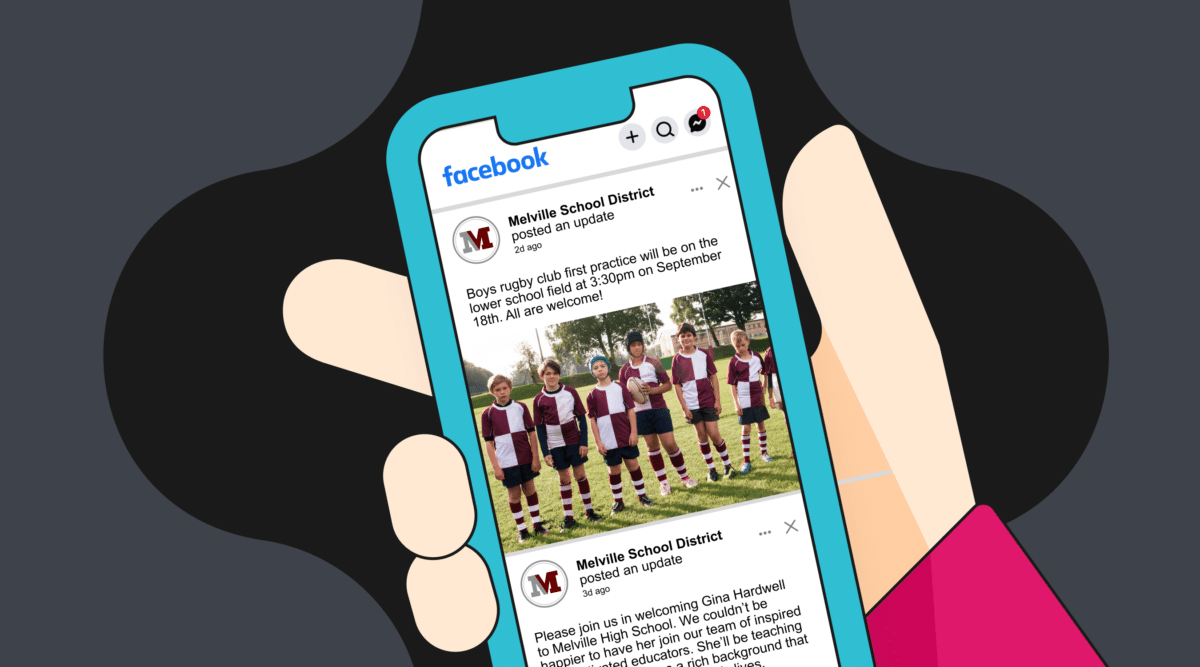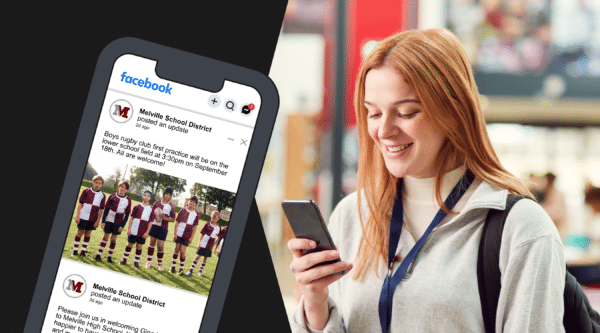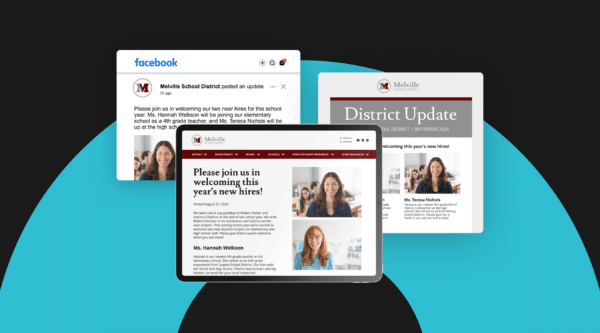

You’ve set up your school’s social media profiles—Facebook, Twitter (now X), Instagram, and maybe even LinkedIn—but now what? With so many channels, it’s easy to feel overwhelmed by what to post, where to post it, and how to engage your audience effectively. Should you share news stories, event updates, or school closings? What about photos from last night’s volleyball game?
The key to maximizing your school’s social media presence is understanding the strengths and limitations of each platform. By tailoring your content to fit the unique nature of each social media channel, you’ll improve engagement with parents, students, and the broader school community.
Facebook: Engage Your Community, but Know the Limits
Facebook remains a dominant platform, especially among users aged 35 to 50, which makes it an essential tool for reaching parents and community members. However, its complicated algorithm, Edgerank, determines which posts are shown in users’ feeds. This means that not all of your posts will reach every follower, and real-time, critical updates may get lost in the shuffle.
Here’s how your school can make the most of Facebook:
- Event Photos: Share pictures from school events like games or assemblies to boost community pride.
- Event Calendar: Use Facebook’s built-in event feature to promote upcoming events.
- News and Stories: Share positive news about students, teachers, and community initiatives.
While you can’t depend on Facebook for time-sensitive updates, it’s a great platform for building a sense of community. Consider using Facebook Boosts to ensure that important posts reach a larger audience. Boosts are relatively inexpensive and allow you to target specific demographics, such as parents of students at your school.
For more tips on using social media effectively, check out the SchoolStatus blog.
Twitter (X): Your School’s Real-Time Newsfeed
Twitter (now rebranded as X) is fast, versatile, and widely used by students, media, and younger families. It’s ideal for real-time updates, news announcements, and instant communication. Tweets appear in chronological order, making it easier for followers to stay updated on the latest happenings.
Here’s how your school can use Twitter effectively:
- Real-Time Updates: Share updates on events, sports scores, or school closings.
- Engage with the Community: Use hashtags to categorize content, and connect with local influencers, media, and other schools.
- Professional Development: Share educational resources, articles, or events aimed at faculty and staff.
To make Twitter work for your school, aim for frequent, timely posts. You can also create X Lists to organize followers, such as alumni, faculty, community leaders, or local media. This makes it easier to track and engage with specific groups.
For more insights on how social media can enhance school communication, check out this guide.
Instagram: Show Your School’s Story in Pictures
Instagram is the fastest-growing social media platform, particularly popular with younger audiences. It’s perfect for sharing your school’s story through images and short videos. With its simple, mobile-only design, Instagram allows schools to personalize their online presence and connect with the community in authentic ways.
How your school can use Instagram:
- Behind-the-Scenes Photos: Show the daily life of your school, from classrooms to pep rallies.
- Short Videos: Post 15-second clips of students, teachers, or events to capture quick, engaging moments.
- Visual Announcements: Use Instagram Stories for time-sensitive updates or reminders.
Instagram’s hashtag feature also helps to organize your posts around specific themes or events, making it easier for users to find relevant content. Start using hashtags like #schoolpride or #yourcommunityname to enhance engagement.
Pinterest: A Visual Bulletin Board for Schools
Pinterest may not be as widely used by schools yet, but it offers a unique platform to organize and share visual content. Think of Pinterest as a digital bulletin board where you can group images into collections, or “boards,” that are relevant to different aspects of school life.
Ideas for Pinterest boards:
- Classroom Projects: Showcase student artwork, science projects, or class presentations.
- Teacher Resources: Pin helpful educational resources for teachers and parents.
- Event Highlights: Create boards for events like graduations, plays, or sports games, grouping together images from each occasion.
Pinterest can be a powerful tool to showcase your school’s accomplishments, but like all social platforms, it requires consistent engagement. Share, like, and follow other Pinterest users to build your school’s following.
LinkedIn: Professional Networking for Your School
LinkedIn is traditionally viewed as a professional networking site, but schools can benefit from using it to connect with alumni, teachers, and prospective staff. Many universities already use LinkedIn to help graduates find jobs, and K-12 schools can use it to foster professional development and networking opportunities.
How your school can use LinkedIn:
- Recruitment: Promote job openings and attract top-tier candidates for your school district.
- Professional Development: Share articles, training opportunities, and resources for teachers and administrators.
- Networking: Connect with educational organizations, local businesses, and other schools to foster collaboration.
LinkedIn is also a valuable resource for students preparing for the workforce. Schools can create groups or pages that offer networking opportunities, resume tips, and insights into different careers.
Crafting a Comprehensive Social Media Strategy
To make the most of social media, your school needs a well-rounded strategy that leverages the strengths of each platform. Here’s a quick overview:
- Facebook: Great for community engagement, sharing stories, and posting event updates.
- Twitter (X): Best for real-time updates, emergency information, and connecting with students and media.
- Instagram: Ideal for personalizing your school’s image through photos and short videos.
- Pinterest: A creative way to organize and display school-related content.
- LinkedIn: Useful for professional networking, recruiting staff, and fostering alumni relations.
Conclusion
The world of social media offers schools incredible opportunities to connect, engage, and grow their communities. However, it’s crucial to understand the specific benefits and limitations of each platform. A one-size-fits-all approach won’t work—customizing your content to fit each channel will maximize its impact.
While Facebook and Instagram build community through visuals and stories, Twitter serves as a real-time newsfeed for updates and alerts. Meanwhile, Pinterest and LinkedIn cater to more niche audiences—visual learners and professionals.
To stay ahead of the curve and deepen your school’s digital engagement, check out the latest insights and tools from SchoolStatus, designed to simplify and enhance school communications.
With the right strategy, social media can become a powerful tool in your school’s communication arsenal.
Stay Connected
News, articles, and tips for meeting your district’s goals—delivered to your inbox.





